Here comes the sun 3.0
to Sacha van den Haak & Felix van Dam’s windowBy the calculations from the previous post the silkscreen appeared to be too small for our plans. If you really want to see the transformation of light of a whole day, the exposure time should be longer which will lead to bigger spaces on the window.
This raised another question. The standard light sensitive emulsion is composed to produce sharp images in a limited amount of time. We however, do not want our images to be sharp. We want the emulsion to be the least reactionary to sunlight as possible, in order to get details. If only we could stretch the exposure time to a minute…
We called several companies that produce emulsion, but none of them had a solution. A search on the web brought us to a page that describes how to make your own light sensitive emulsion. The recipe was quite simple; you would need water, cheap glue (the white stuff that doesn’t really stick) and potassium dichromate. And apparently you can just get the stuff at a well sorted pharmacy!
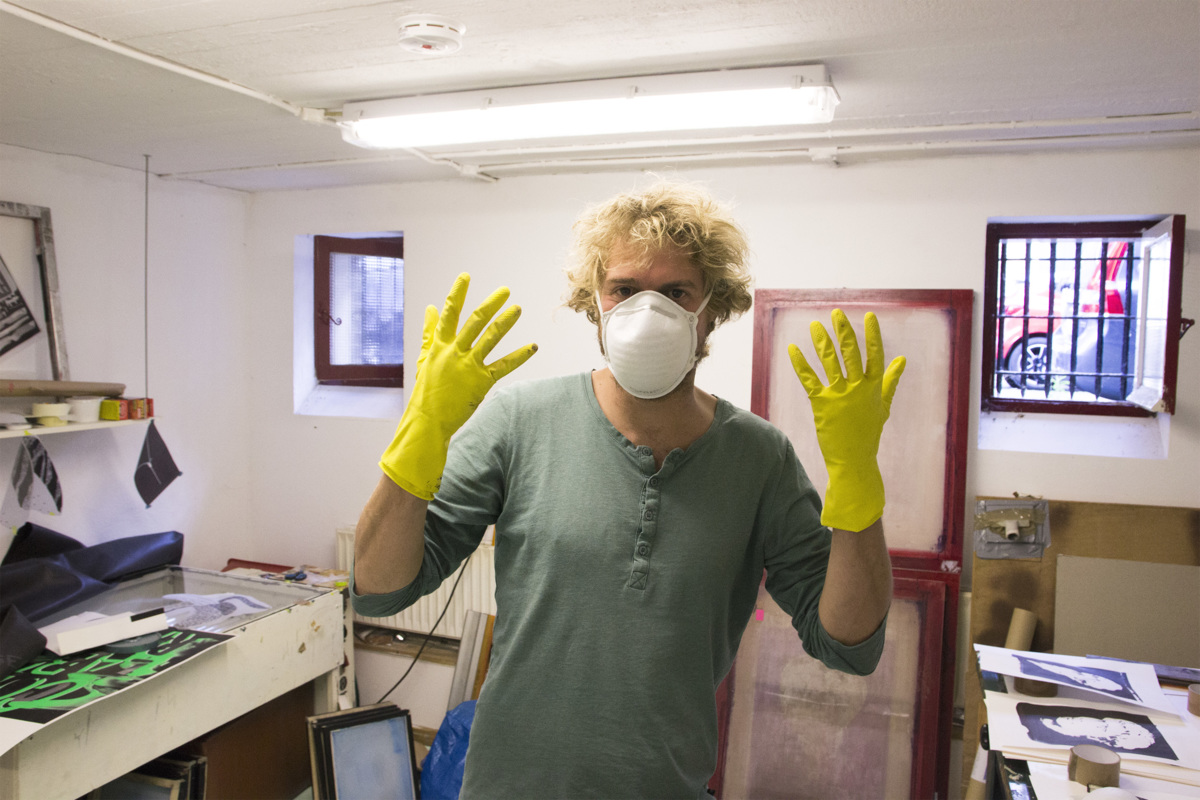
Look mom no goggles!
After trying a couple of pharmacies it was clear we couldn’t get any potassium dichromate, so we turned to Google for answers. We found an online chemical company that sells the stuff. We ordered it, sat back and waited for it to arrive.
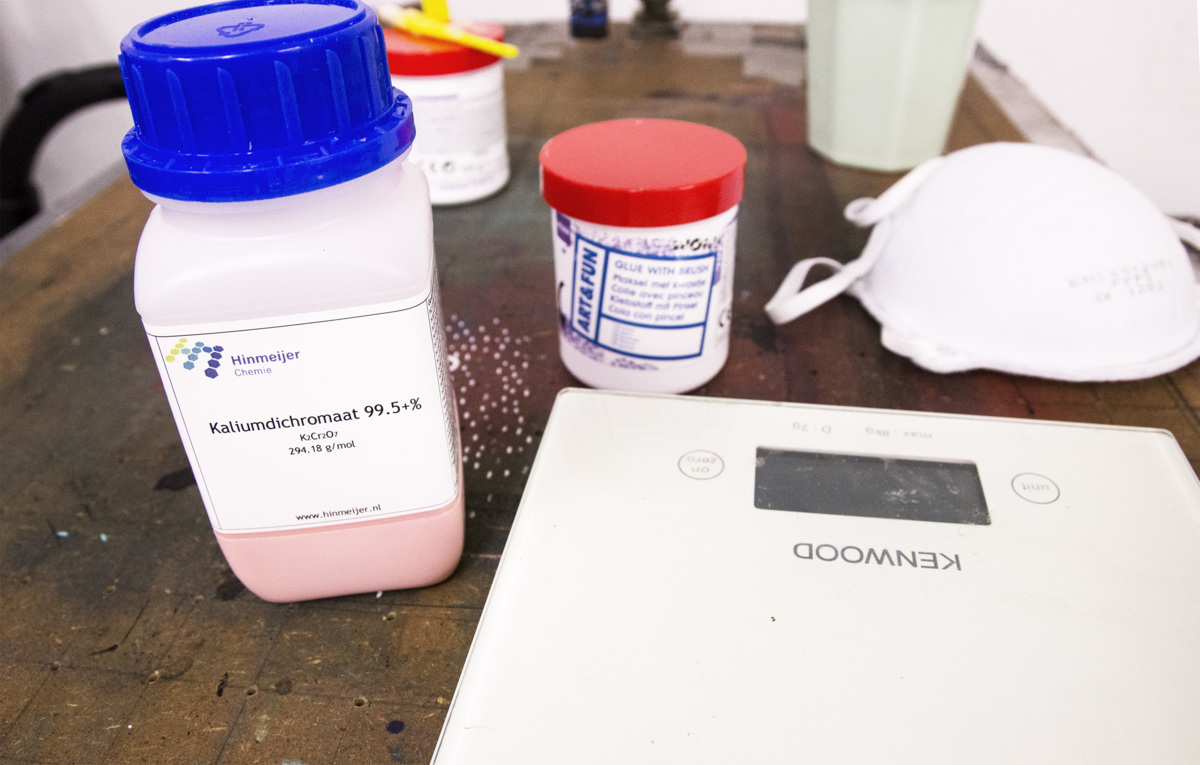
This will be interesting
The stuff’s packaging had all kinds of warning stickers, and the bottle told us the potassium can cause genetic deformation. Great! Let’s get started. We took the necessary precautions (although what kind of protection would a 50ct mask provide…) and mixed the chemicals into a yellow fluid substance. In our first experiments we made the solution according to the original recipe, so we would have a basis to work from.
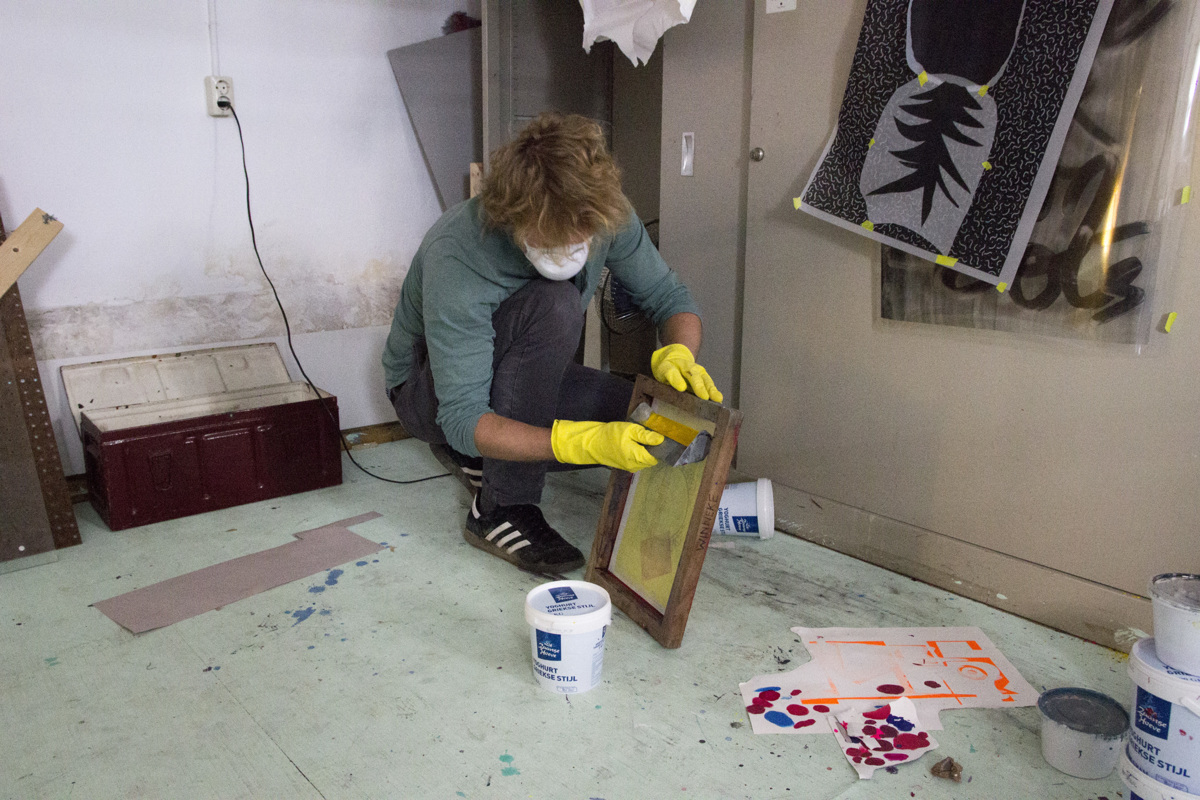
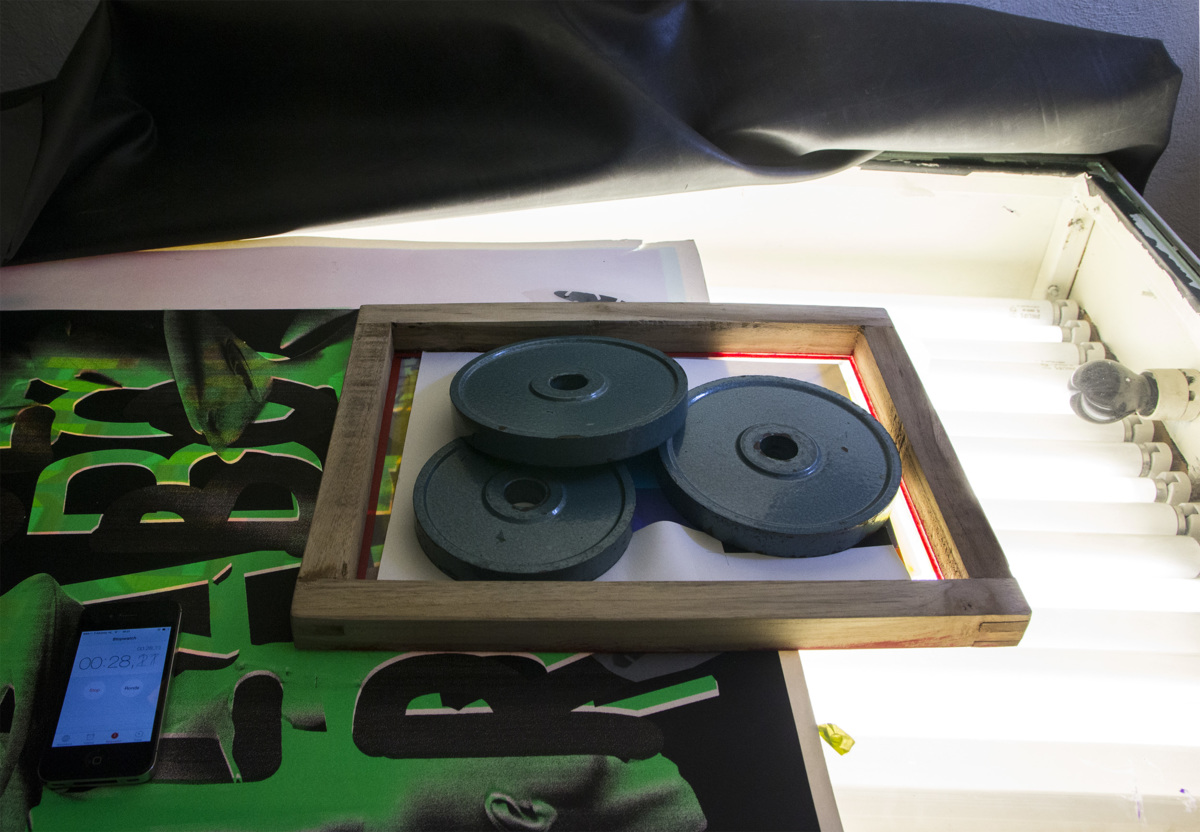
Testing the emulsion with ‘normal’ tube lights
We applied the substance to two screens to start our research. When they were dry, we thought it would be wise to begin with lighting the screen in a normal way. We put one window on the lighting table and (with our approved method of time exposure) we exposed it to UV light. To our surprise the window was totally hardened. The solution worked, or didn’t it? Did we just mix it wrong?
The other window was provided with the same emulsion, but it was exposed to ’normal’ tube lights. And there you have it. We knew the stuff is light sensitive, but this emulsion is sensitive to all light, not only UV. Now this opens a whole new world of possibilities!
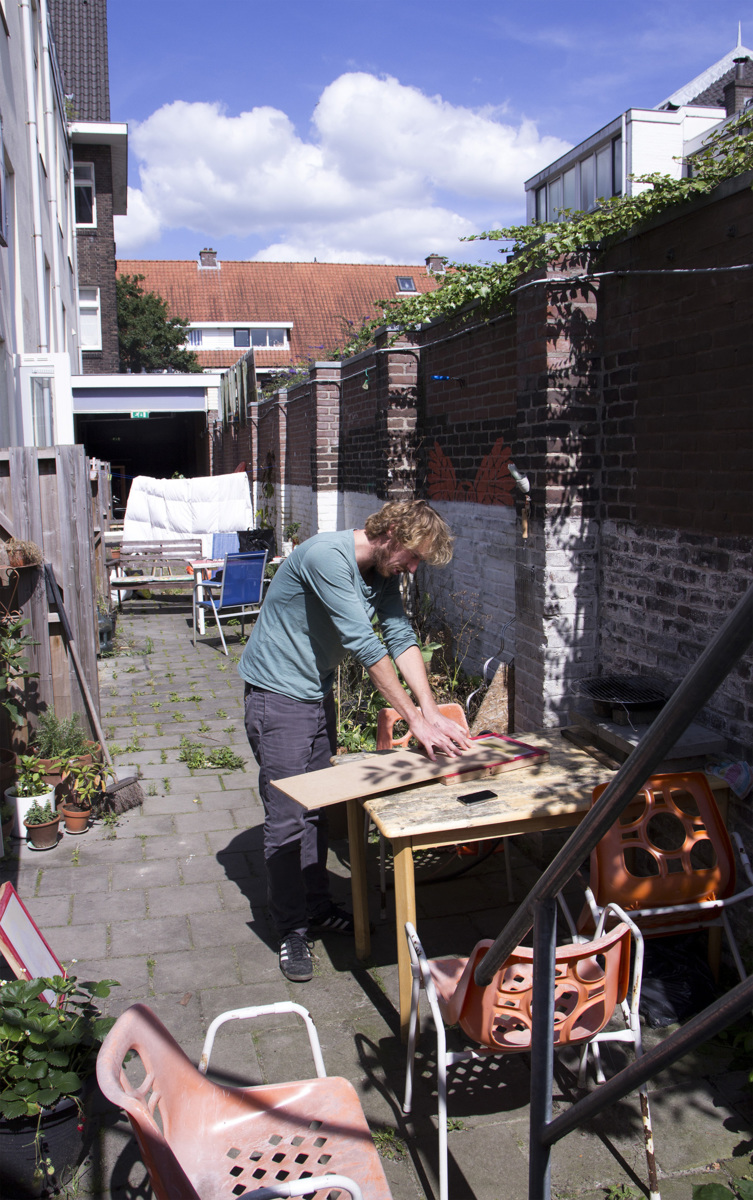
Doing the same test in sunlight
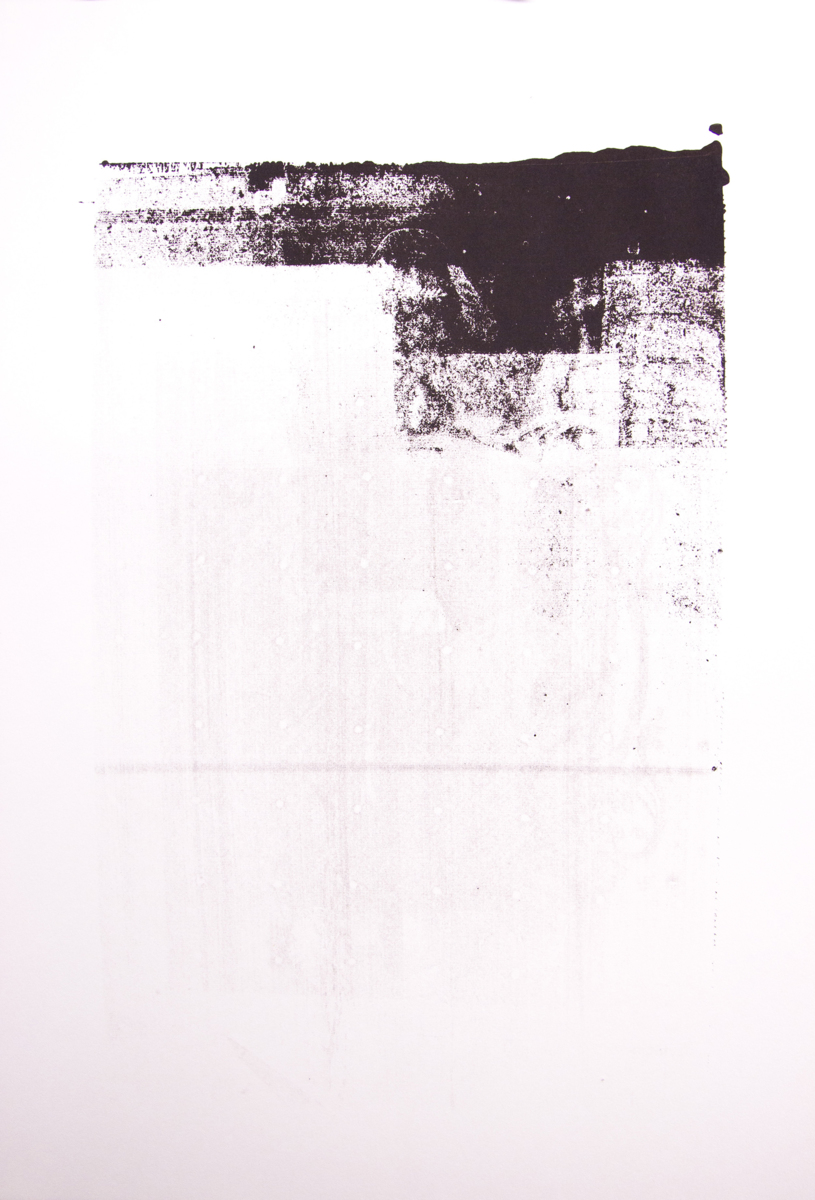
Here you can see what happens when the emulsion gets too little light to harden.
